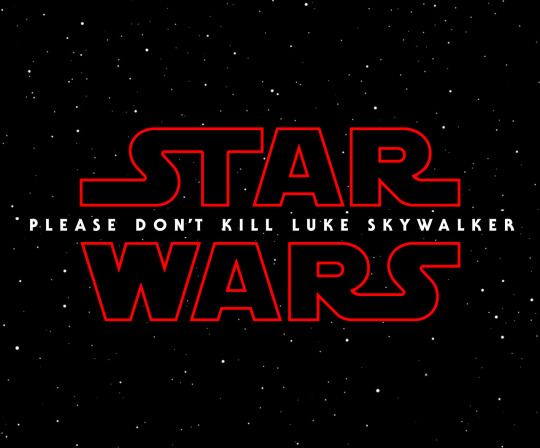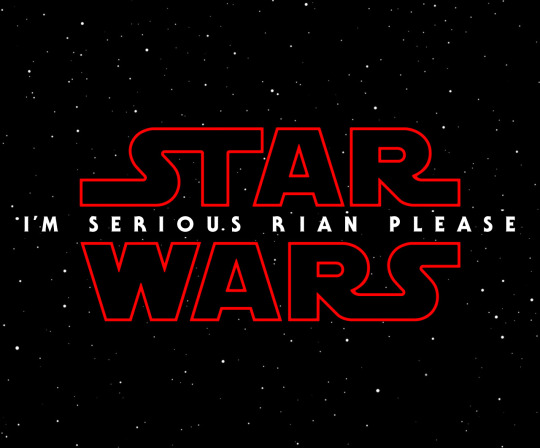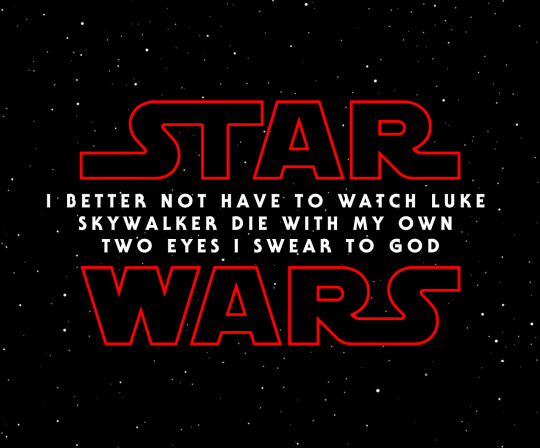Thoughts and ramblings about new tech, interactive media experiences and digital publishing. Currently working on mobile game, The Writer's Block. You're welcome.
Don't wanna be here? Send us removal request.
Text
Lessons from the Pitch
Having had time to take stock of the feedback from the pitching session we had for our concepts a couple of weeks ago, I am now well into composing my proposal document.
Points raised included really highlighting the audio and image scanning technology I proposed to feature within the game. I feel that, in addition to the deep and meaningful narrative, these features set the game apart and would certainly encourage players to immerse themselves within the game. It’s therefore imperative to really stress this as a major selling point for The Writer’s Block.
In terms of funding, I will need to look further into budgeting as my initial target of £60,000 (without including the additional cost of the API tech) was seen to be far too low. In looking at further funding models, it was also mentioned I should consider investiture from other bodies and tax relief programmes from the government, the Seed Enterprise Investment Scheme for example. Stay tuned on this!

It’s also great to have a lot more space to expand on the narrative within the piece, as this is the other major pillar the game sits on. I’ve had time to really flesh out the two narrative arcs as well as individual character developments as these will be key to the emotional connection I aim the game to create with its player-base.

As an additional note, I also won wine at the pitch which was graciously lapped up by my family. Thanks David and Brian!
4 notes
·
View notes
Text
Software Research
I’m coming into the finalisation of the core elements of The Writer’s Block, and there’s a lot to consider.
I’ve spent a lot of time this weekend researching API and how various types of this can be built into and implemented within my game as mechanics to progress the narrative.
Two elements of software I’m looking into include image recognition technology and audio fingerprinting technology. These will allow the players to say, scan in an item or a song for the character they’re interacting with to recognise, progressing the story.
The APIs I’ve settled on are:
- Acoustid: for the audio fingerprint scanning. This links to the MusicBrainz music encyclopaedia, a comprehensive database of released music.
- CloudSight: for image recognition. This software sends a request to a server that will provide a description of the uploaded image’s contents. The game will then read this description to assess whether you have identified the correct item.
I also considered Google’s Cloud Vision API for the image recognition which was a larger and more comprehensive package.
Definitely very interesting software to consider and how to apply it within the development and business model for the game.
1 note
·
View note
Link
A big inspiration for The Writer’s Block: this game actually collects data (over 9,500 years of it so far!) from how the users play the game, ie. their spacial navigation, to help scientists fight dementia!
0 notes
Text
The Writer's Block - Thoughts
Calling in from London here’s the initial information on my app idea:
The Writer’s Block:
“Remember the story when all else fades”.
Exploring storytelling and the effects of dementia, use the features of your smartphone or tablet to help the author create their greatest story.
1 note
·
View note
Text
Digital Stories and the Internet of Things
Reflecting on our double workshop with Gill White, I found the experiences we shared as a group very rewarding both socially and in expanding my knowledge of different forms of interactive media.

The Sherlock & the Internet of Things activity formed the basis of the group work during the first session. After a good icebreaking session and delving into our emotional attachment to various objects (some introspection I was not expecting!) we moved onto the floor to do some good old fashioned drawing and colouring in. These preliminary activities were stimulating and strangely therapeutic, qualities that seem so often absent in the work place or in other media experiences.
The main activity, creating murder scenes and establishing clues to create unique and improvised storylines, that consequently required a little acting, was great fun also. Using the surrounding environment to produce a story felt fresh and the ability to then communicate this to a greater community via social media was another eye opener to innovative digital storytelling; Working together remotely to collaboratively piece together a story is certainly an area I’d like to look into more on my research. Furthermore, the fact that this can be taken anywhere (if you have the necessary materials) is also a major plus point!
The following session, we looked more directly at everyday objects around us and how we could use these to produce a new innovative product. It forced us to think quite deeply about how a bond between two, often quite different, objects could be formed and how the resulting combination could be of legitimate use.
This workshop has certainly stretched my mind in thinking how interactivity can enhance and create new, unique experiences and indeed emotional attachment in storytelling. A user’s emotional attachment to an object is definitely something I’d like to explore in my own project in this regard. Many thanks Gill!
1 note
·
View note
Text
The Writer’s Block
Taking another step forward (and a little bit left) with my project, I’ve managed to develop certain ideas and research into conceptualising a legitimate product.
Introducing, The Writer’s Block. This will be a game app available for both Apple and Android smartphones and will explore and raise awareness of issues surrounding those living with dementia.
NARRATIVE
While still at initial concept stages, the game intends to focus on the narrative of the player who answers a strange advert to assist an author in writing a book: someone who says they are suffering from writer’s block. The narrative follows your relationship over a long period of time with this author who you begin to realise is showing symptoms of Alzheimer’s. You will visit the Author regularly to help them recall memories of past experiences to spark the inspiration for passages of their book of which the player will be transported into and play within the game.
MECHANICS AND DESIGN
Moving on from my research into how music can be used in new innovative interactive ways, I have been recently looking into art therapy as a means to help and treat those with conditions such as dementia. Music in particular has been shown to not only encourage positivity but also to aid memory retrieval and to transport users back to another time, enabling a reconnection with their identity.
Within the game via your smartphone’s technical capabilities you will often have to identify songs for The Author to help them ‘unlock’ their memories as it were. For example, The Author will be struggling to recall a memory for the book and begin to relate words to a particular song. The user will then have to identify the song in question, play it from a particular device outside of the game and read the audio fingerprint using the app to progress the story. Should the technology be available, using your camera to identify objects in certain pictures via a photo recognition method would also be another mechanic to consider as well as location services and identification, both technologies that could explore memories and familiarity to add to the depth of the narrative. Another method could also require the user to draw an image on to the screen for The Author.
Upon ‘unlocking’ these memories, The Author will relate stories to the player, acting as the separate ‘levels’ of the game in a side-scrolling platforming style. At later stages these become more difficult as The Author’s condition progresses; levels will often be subject to repetition, obscurity and other complications.
Generating a genuine emotional connection to the player via an immersive experience, I feel this concept could gain traction with potential charities and organisations who share the objective to create a further awareness and understanding of dementia and Alzheimer’s disease.
2 notes
·
View notes
Link
This is all I ever wanted.
2 notes
·
View notes
Link
Tinder for musicians. If only I’d thought of it first!
0 notes
Text
The New Realities Of Business: Augmented And Virtual Technology
See on Scoop.it - Transmedia - AR - VR- ARG —ITS ALL INTERACTIVE

AR and VR have the potential to reshape business and society, enabling every organization to be a data company, an experience company, and a technology company.
1 note
·
View note
Text
Interactive Innovations in Music
After much deliberation, I have decided to focus my research into how interactive media can be used to benefit and enhance aspects of the music industry. Music is something I’m particularly passionate about and I’m curious as to how further innovation in interactivity can find its place in an industry that is in many aspects becoming outdated or obsessed with nostalgia. You can hear this nostalgia throughout most records from new artists today and it’s sweeping the entire industry; vinyl sales have just reached a 25 year high and even cassettes are making a comeback!
Many musicians, guitarists in particular (myself included), are stuck in their old ways, eager to search out and snap up the authentic, vintage gear, eager for replicas and eager to reproduce those classic tones from bygone eras that have become so widely regarded as the peak of tonal nirvana.
I’m not saying there’s anything wrong with this but I feel there’s a place for some innovative and interactive technology here. If we’re looking backward, why can’t we move forward at the same time?
So what can we offer? Perhaps an app that lets you test effects pedals remotely with your own instrument, interactive vinyl sleeves that give you a history of the artist or a sneak peek of the music inside via your phone’s camera (or even produce a hologram of them performing on the turntable?!). Perhaps an interactive tale through the streets of your city showing you where some the greatest music was made, or even a game experience that brings storytelling through music to new heights?
Over the coming weeks I’m going to delve deeper into these possibilities. One example I came across this week was music mixed with an AR experience. Behind the music of the band Lord Huron lies the author George Ranger Johnson. The band say this man is the influence behind their music and their music videos explicitly state that they are based on his works.
youtube
Yet going to the author’s website, all his books are out of print. In fact, you’ll never be able to delve deeper because he doesn’t exist! As this New York Times article explores further, the author is “one character in the digital fantasy world Mr. Schneider has created for his band”.
While this of course is just a bit of digital trickery and doesn’t particularly have an obvious marketing or monetary goal, this rich experience enhances the musical content and gives listeners an adventure to pursue around the band’s products creating a memorable depth.
It led me on to thinking, could a cryptic and enticing musical journey be laid out across the internet providing a rich storytelling experience? Could the user, while uncovering the secrets of this trail, be in fact piecing the music together at the same time, becoming a part of the compositional process? Perhaps this sort of thing could be used as a marketing tool to promote music in places you wouldn’t expect?
So many questions! Stay tuned for more folks!
#int17#interactive#media#transmedia#lordhuron#music#arg#internet#nostalgia#vinyl#guitar#storytelling#innovation
1 note
·
View note
Text
The Witcher 3: Wild Hunt - Game Review
Yes, I know it’s super behind the times to review a game that’s been out for nearly two years now. Yet I’ve certainly spent a good chunk of those two years with The Witcher 3: Wild Hunt and I’ll admit, I’m still not done! The main storyline took me a good 100 or so hours to power through (albeit with side-quests still remaining) and now I’m working through the exceptional DLC that CD Projekt Red released making an already huge game astronomical in scope.
As you can tell, I loved (and am still loving this game), otherwise I certainly wouldn’t have invested this much of my life in it. RPGs and heavily story driven games are my thing; Star Wars: Knights of the Old Republic and the Mass Effect series are enduring loves of mine, stalwarts difficult to usurp in my all-time favourite games collection. I think The Witcher 3 has topped them all though and it rightfully deserves its place. The voice acting is top notch, the graphics and gameplay are sensational (especially on PC) and the seemingly everlasting amount of content continues to baffle me as I work towards the close of Geralt of Rivia’s story.
(Now for a lame part...) An emotional connection with a game is a big thing for me. Connecting and interacting with and influencing the richly developed characters and world within The Witcher 3 was one of the qualities that hooked me, often in the same way as a deep and well-crafted novel would (and it’s certainly something I’d like to look into and research further). Strangely, after having played the game, this launch trailer was even more thrilling having become invested in the characters:
youtube
Yet, oddly the most interesting part about this game is not any of this - it’s the highly addictive mini-game Gwent! Perhaps it was a competitive streak I suddenly developed or even the classic ‘collect ‘em all’ or completionist instinct taking hold, but this in-game card game is often all I pursue when I sit down to play. These tried and tested mechanics pushing players towards a consumerist goal, played out in a repetitive and easy to play, turn-based scenario, provide a supremely addictive and overall simple distraction to the main storyline and build on an already impressive level of depth - so much so that I’m still working on that full card collection!
Granted, most of the thoughts I’ve contributed here about my time with the game aren’t new. But in an industry where many AAA games are getting flashier, where more money is being splashed around to find the next big idea, sometimes, despite all I’ve said about richness and character development, it is the simplest game mechanics that keep us coming back for more and are vital in establishing a truly fantastic videogame experience.
And as an afternote, it turns out they’re releasing a standalone Gwent game!
1 note
·
View note
Text
Interactive Experiences
Like many of my generation, I have grown up with interactive media. Now a part of everyday life, I can hark back to those early days of playing Snake on my Mum’s old Nokia, getting my first Game Boy and having recurring nightmares over A Bug’s Life on the PS1 when I couldn’t get past that damned bird.
Growing up with rapidly advancing technologies, it was not always videogames that captured my imagination: highly interactive museum exhibits like those at @Bristol and the famed arrival of the electronic whiteboard, clear memories of an exciting childhood. The possibilities were endless to me.
Indeed, interactive media is now key to enhancing one’s learning, knowledge and entertainment experiences. A particularly exciting example that occurs to me is that of Sat-JF14. In 2014, John Frusciante, ex Red Hot Chili Peppers guitarist, allegedly fired his new album into space. Once it reached orbit, users would download an app to stream the music when the satellite passed over their respective region.
youtube
While there was obvious scepticism as to the validity of the experiment, the very notion that we could communicate with a satellite in real time to receive content was a highly interesting concept and was certainly a creative and unique marketing tool in promoting the album. It is these types of innovative, interactive experiences that I look forward to further researching for this blog.
#int17#interactivemedia#john frusciante#enclosures#videogames#app#space#sat-jf14#interactive#streaming#music#marketing
4 notes
·
View notes


